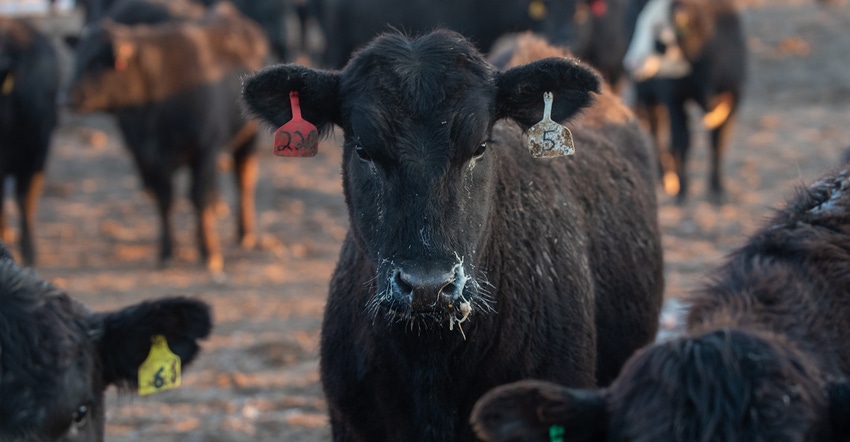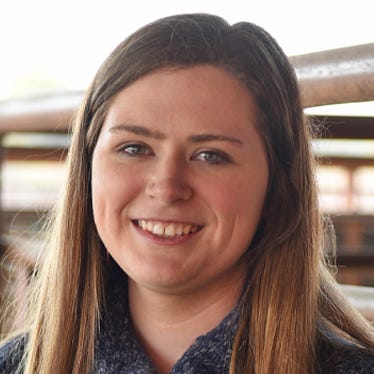How beef trade and demand, cattle supply, and packing capacity drive cattle markets — and how you can manage around them.

Travis Hickey has two main points to share with cattle producers:
Times are changing, and cattle markets are more dynamic than ever.
Beef producers need to understand how what happens on the other side of the world affects their markets.
Hickey works with Cattlenomics, a Colorado-based market research, commodity brokerage and consulting business.
Cattle market dynamics
First, a market dynamic summary. Hickey shares global factors and trends recently influencing the cattle market:
Global beef trade and demand. African swine fever outbreaks in China created a protein deficit and drove new demand for meat imports. Plus, Australian beef production shortfalls have meant a need for more U.S. beef exports. Brazil was a major supplier of increased Asian demand until China shut out Brazilian beef imports due to BSE outbreaks. As a result, more Brazilian beef has been sent to North America.
U.S. cattle supply. Beef cow herd size continues to decline, and the dairy cow inventory also has declined, but not at the same rate as the beef cow inventory. Another change in cattle supply is the increase of beef-dairy cross cattle, which means lighter placement weights. This leads to a lower turnover rate and feedyards that stay full longer.
Mother Nature also drove an increase in U.S. beef cow slaughter numbers. In fact, nearly 300,000 more cows were harvested in 2021 compared to 2020. Thus, the U.S. beef cow supply is tighter, which also means a smaller feeder cattle supply.
Packing capacity. When there are too many cattle and not enough space in packing facilities, workers must harvest cattle on Saturdays, Hickey explains. In turn, this creates an increase in packer margins. In April 2020, Cattlenomics suggested the daily slaughter capacity of fed cattle only was 98,500. During 2020 and prior to the pandemic, the daily maximum was 99,519 fed cattle slaughtered. And in 2021, the daily maximum for fed cattle was 97,286.
The point? No packing plants were taken away and packer margins increased, but daily slaughter maximums for 2021 still couldn’t touch the slaughter numbers of pre-pandemic.
What do these factors have to do with risk management?
Hickey says beef prices are tied to global markets and drive U.S. beef price expectations based on supply and demand. And trade flow disruptions impact prices domestically, meaning cattle producers should be alert and positioned for what is happening globally.
At the current point in the cattle cycle, there are fewer cattle each month, and that will be the case until everyone starts expanding herds again. So, producers should think of a risk management method that protects equity, he explains. In this instance, you should use tools that advance your buy rather than advance your sell. In other words, buy future contracts to lock in purchase prices for feeder cattle that you plan to buy in the future.
Plus, Hickey says a lower feedyard turnover rate will force cattle feeders and producers to make decisions further out in the curve. For example, producers could look at November prices to determine cattle value throughout the spring.
Manage and measure risks
Still, Hickey says success with risk management tools requires risk measurement and planning:
Risk measurement. Recognize how many cattle you have in inventory and make selling decisions based on those numbers. Ensure positions, or contracts, are relative to your inventory size. If you have 200 futures contracts to sell over a two-month period, it may not make sense to sell five to 10 at a time in terms of sizing your trading relative to your cattle inventory. Most commodity brokerages offer a sensitive analysis to help measure your risk of cattle that are open to the market.
Risk management plan. Producers may consider exposure limits such as never having less than 50% of your cattle inventory hedged. This strategy forces you to decide if you were to diverge from that plan.
Another practice could include a time component — committing to having a percentage of cattle bought, sold or hedged before a specific date. If you choose to forecast cattle price range expectations, then remain realistic and data-based. Allow your personality, expectations and risk appetite to drive your plan. For example, if you don’t want to watch markets in a short period of time, then it’s not recommended to scale positions that would require you to watch the markets in five-minute intervals.
Hickey acknowledges there’s no silver bullet for risk management. But you can build a plan for your operation, measure risks, understand feedyard turnover rates and adjust accordingly.
About the Author(s)
You May Also Like





